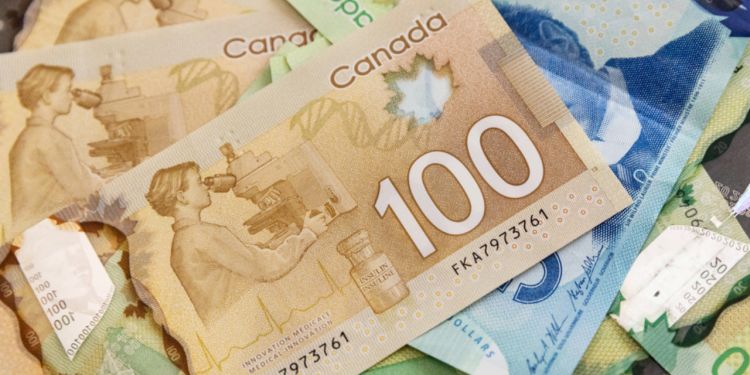Canada’s financial ecosystem is made up of banks, trusts, credit unions and other financial and insurance firms, and is perceived to be one of the most sound and safest in the world. When an immigrant moves to a new nation as a permanent resident or an overseas student, having access to one’s savings is vital. Beginning life in a new country is knotted with one’s financial journey, making it essential to understand the fundamentals of banking.
This article will focus on an insight of Canada’s leading banks, advise you through the procedure of opening a fresh account and provide tips and resources to make you understand more about direct and credit deposits.
Largest banks in Canada
The following are the biggest banks is Canada which are often known as the “Big Fives”, they are:
| Bank | Market Capitalization, 2019 | Number of ATMs, Canada, 2019 | Number of Branches, Canada, 2019 |
| Royal Bank of Canada (RBC) | $152 | 4,240 | 1,201 |
| Toronto-Dominion Bank (TD) | $136 | 3,509 | 1,091 |
| Bank of Nova Scotia (Scotia bank) | $92 | 3,650 | 950 |
| Bank of Montreal (BMO) | $62 | 3,300 | 900 |
| Canadian Imperial Bank of Commerce (CIBC) | $50 | 3,075 | 1,024 |
Additionally, there are a variety of digital-only banks, such as Simplii Financial (a subsidiary of CIBC) and Tangerine (a subsidiary of Scotia bank).
Why choose Royal Bank of Canada ?
As an immigrant in Canada, one would want a trusted partner who understands their banking needs. Royal Bank of Canada is one such partner that has been pioneering its customers for over 150 years.
In their 2020 rankings, Global Finance magazine placed Royal Bank of Canada at the #1 position as World’s Safest Commercial Banks.
Types of bank accounts for settlers in Canada
There are two main types of bank accounts in Canada:
- Savings account: A high-interest account to save money over a longer-term.
- Chequing account: An essential basic account for daily transactions and purchases.
Based on one’s needs and status (permanent resident, international student, etc.) in Canada, RBC offers a few different types of immigrant bank accounts for everyone to choose from:
Bank accounts for permanent residents
Royal Bank of Canada No Limit Banking: Includes unlimited debit transactions, no monthly fee for a year, and two no-fee international money transfers per month for 12 months.
Royal Bank of Canada VIP Banking: Includes no monthly fee for a year, unlimited debit transactions and three no-fee international money transfers per month for a year.
Royal Bank of Canada Signature No Limit Banking: Includes unlimited free Interac e-Transfers, unlimited debit transactions and two no-fee international money transfers per month for a year.
Bank accounts for international students
Royal Bank of Canada No Limit Banking for Students: Includes unlimited debit transactions.
Royal Bank of Canada Student Banking: Includes 25 free debit transactions per month and
requires no monthly charge.
Essential documents to open a Canadian bank account
A student can initiate its procedure of opening a bank account while in their native country by booking an appointment with the RBC advisor who would guide with the detailed steps.
To open a immigrant bank account, students will require the documents mentioned below:
- Passport
- Confirmation of Permanent Residence (CoPR) and/or Social Insurance Number (SIN)
Foreign students also need:
- Proof of enrolment (optional, good-to-have)
- Student permit (IMM 1442) or Temporary Resident Visa (TRV)
Building credit history early
A credit score is a procedure followed by financial institutions to calculate their ability to repay loans. A decent credit score will mean that one is eligible for better on loans, mortgages, and interest rates down the road. To start building credit history, it’s important to have and use a credit card. Having a credit score or a credit rating is crucial for living in Canada.
Without having to carry hard cash, Credit cards have the benefit of making it easier for students to pay for their essentials. Unlike a debit card, a credit card allows one to make a transaction even if they don’t have the money on their account, it can be paid later. It’s like getting access to a bank loan.
When the credit card is issued, it is advisable to start making payments for minor expenditures such as phone bills or groceries to develop one’s credit history on a gradual basis.
Some popular Royal Bank of Canada credit cards for newcomers
- Royal Bank of Canada Rewards+ Visa
- Royal Bank of Canada Cash Back Mastercard
- Royal Bank of Canada U.S Dollar Visa Gold
- Royal Bank of Canada Avion Visa Platinum
Your banking advisor will help you pick one when you call or visit the branch.
Direct Deposit
Direct Deposit is a benefit provided by banks where the employer or the government will deposit it directly into your bank account. It’s an easy, secure, fast way to access your money irrespective of one’s location.
Most employers credit the payment to employees by directly depositing in their bank account.
Enrolling for Auto-deposit
Auto-deposit is different from Direct Deposit as its function can be used as a simple way to send and receive money between individuals. Usually, Interac e-Transfers need one to answer security questions and approve the amount that someone sends you.
Auto-deposit provides another layer of protection and suitability, allowing fully bypass the need for security issues and deposit the funds directly into the account. It can be registered through online banking.
Not only do the banks provide services like investment, mortgages, security deposit boxes and specific financial planning but speaking to a financial advisor about the particular priorities and needs will help recommend relevant items for financial safety.


















Add comment